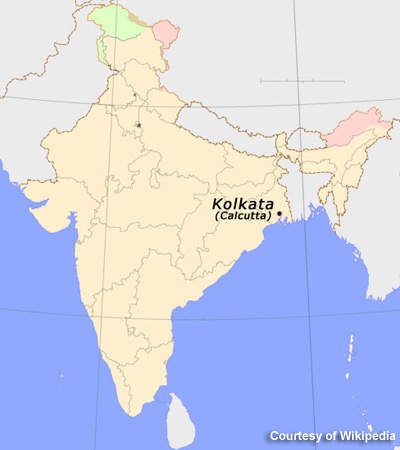India’s oldest metro in Kolkata, the capital city of the state of West Bengal, is undergoing an extension that will link Salt Lake Sector V in the east to Howrah Maidan in the west. It will also connect the existing north-south metro line. The project includes an 8km-long and 100ft-deep tunnel under the Hooghly River and a 5.7km-long elevated section.
The total cost of the project is estimated to be more than $1bn and is expected to serve 480,000 commuters a day. With a population of 7,780,544, Kolkata is one of the most populated cities in the world.
Ground breaking took place in February 2009. A new entity named Kolkata Metro Rail (KMRC) was formed to construct and operate the line. The project is being executed in two phases and is expected to be completed by October 2014.
The first phase of the project, which includes the elevated portion, is expected to start operations by March 2012.
Project
In January 2004, Pacific Consultant International Group conducted a feasibility study for the line. The report proposed the route and tubular structures under the Hooghly River. About 56 acres of land is needed for the project of which 53 acres is government-owned with private land making up the rest. The line will run on standard gauge rails rather than the broad gauge on which the existing line 1 runs.
Construction of the line is being jointly taken up by the Government of West Bengal and the central Government of India. The governments will bear the cost of the project with West Bengal incurring 30% of the cost and the central government 25%. The remaining 45% will be funded by the Japan Bank for International Cooperation. The bank advanced a loan of $856.40m in 2007.
A consortium including Lee Harris Pomeroy Architects (LHPA) was appointed to carry out the preliminary design of the line. LHPA was responsible for designing six underground stations and creating land-use programmes in the station areas.
Design and construction of was awarded to Afcons Infrastructure, a subsidiary of the Shapoorji Pallonji Group. The work includes the design and construction of three underground stations. The company will also construct about 3km of twin bored tunnel, of which 520m is under the river. Afcons is executing the project in a joint venture with Russian company Transtonnelstroy.
In March 2010, ITD Cementation, a part of Italian-Thai Development Public Company, was awarded the contract to build the underground portion between Subhas Sarobar and Central Metro. As of March 2010, tenders for the remaining section that will run under the river had yet to be invited. The contract for building the elevated stations and viaducts was awarded to Gammon India and Simplex. Gammon will carry out the design and construction of 4.725km of viaduct.
The line will be integrated with existing metro services, buses and ferries. It will connect with the north-south line at Central station and suburban and long-distance services at Howrah and Sealdah stations.
The new line will also connect with the bus depot at Howrah and Sealdah stations and with Karunamoyee International Bus Terminal at Salt Lake City. Ferry services at Howrah will also link to the project.
At Mahakaran Station, KMRC will operate a shuttle bus service along the corridor of the BBD Bag area. The service is planned to be provided every 15 minutes and free of charge to travellers. Similar services are planned for the elevated stations at Salt Lake, Central Park and Karunamoyee stations.
Infrastructure
As part of the project 12 new stations will be constructed. Six of the stations will be underground while the others will be elevated. Construction of the underground sections will be carried out using a state-of-the-art tunnel boring method which will lead to minimal disruptions on the surface.
The elevated viaduct will consist of a prestressed concrete U-shaped or box girder on a single pier with pile or open foundations. It will be located on the median verge of the road.
Rolling stock
The line will have four-car trains with a capacity of 1,066 passengers. Another two cars could be added in the future depending on demand. The six-car trains will have a capacity of 1,626 passengers. The trains will be 2.88m wide and will have a stainless steel body. The axle load of the trains will be 16t with a longitudinal seating arrangement. All trains will be air conditioned and run at a 80kmph.
Signalling and communications
The line will have two types of signalling equipment. One will feature cab signalling and continuous automatic train control with automatic train protection. The other signalling equipment will include an integrated system featuring fibre optic cable, SCADA, radios and a PA system. The line will also have a train information system, control telephones and a centralised clock system.
Line routes
The line’s route will cover Howrah Maidan, Howrah, Mahakaran, Central, Sealdah, Phool Bagan, Salt Lake Stadium, Bengal Chemical, City Centre, Central Park, Karunamoyee and Salt Lake Sector V. The section from Salt Lake Sector V to Yuva Bharati Krirangan will be elevated. The remaining part of the project will be underground.
Future
Future plans for the section include an extension to Newtown in the east. An extension to Domjur in the west is also being considered. In October 2008, KMRC commissioned a feasibility study to explore the possibilities of extending the new metro line to link the airport, located 18km north-east of the city.










